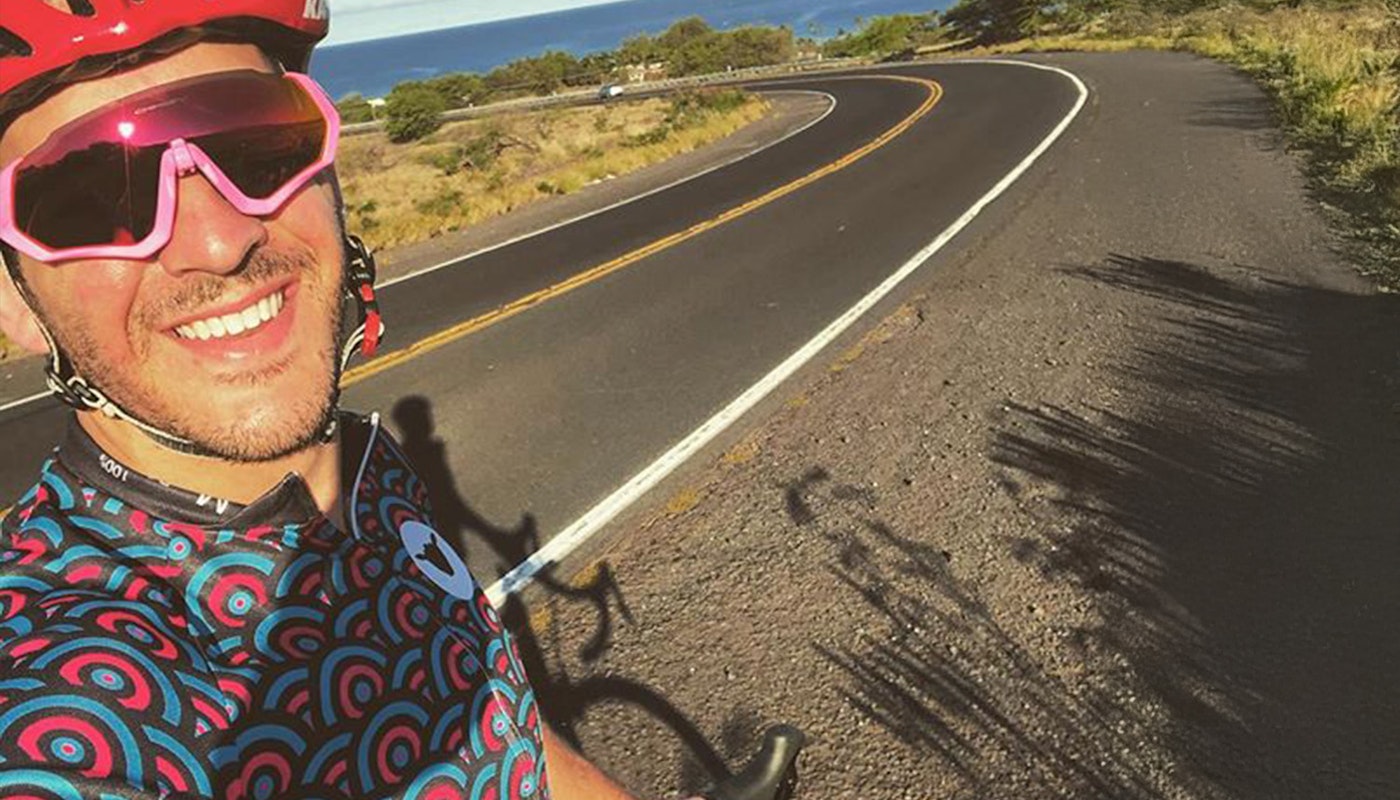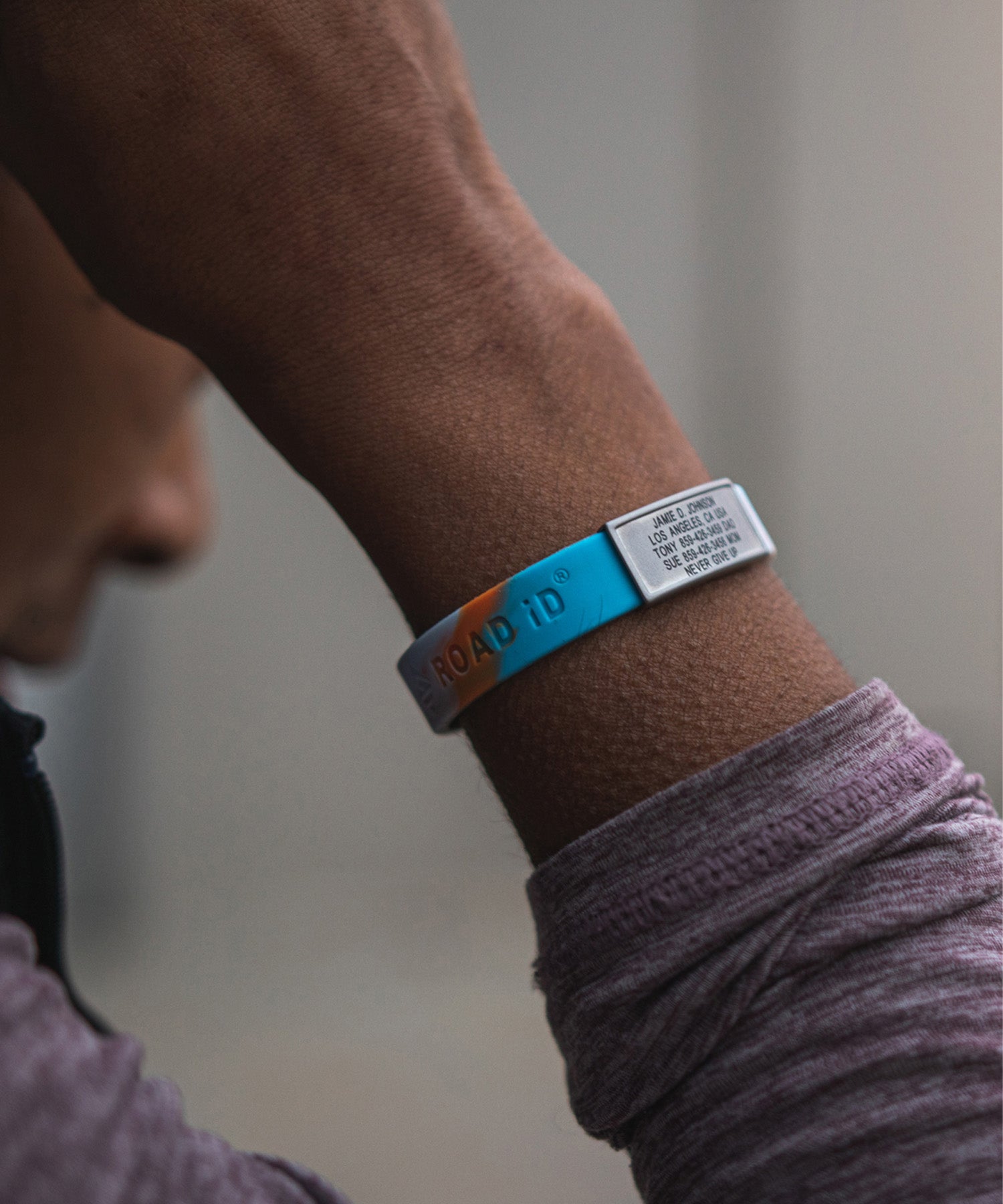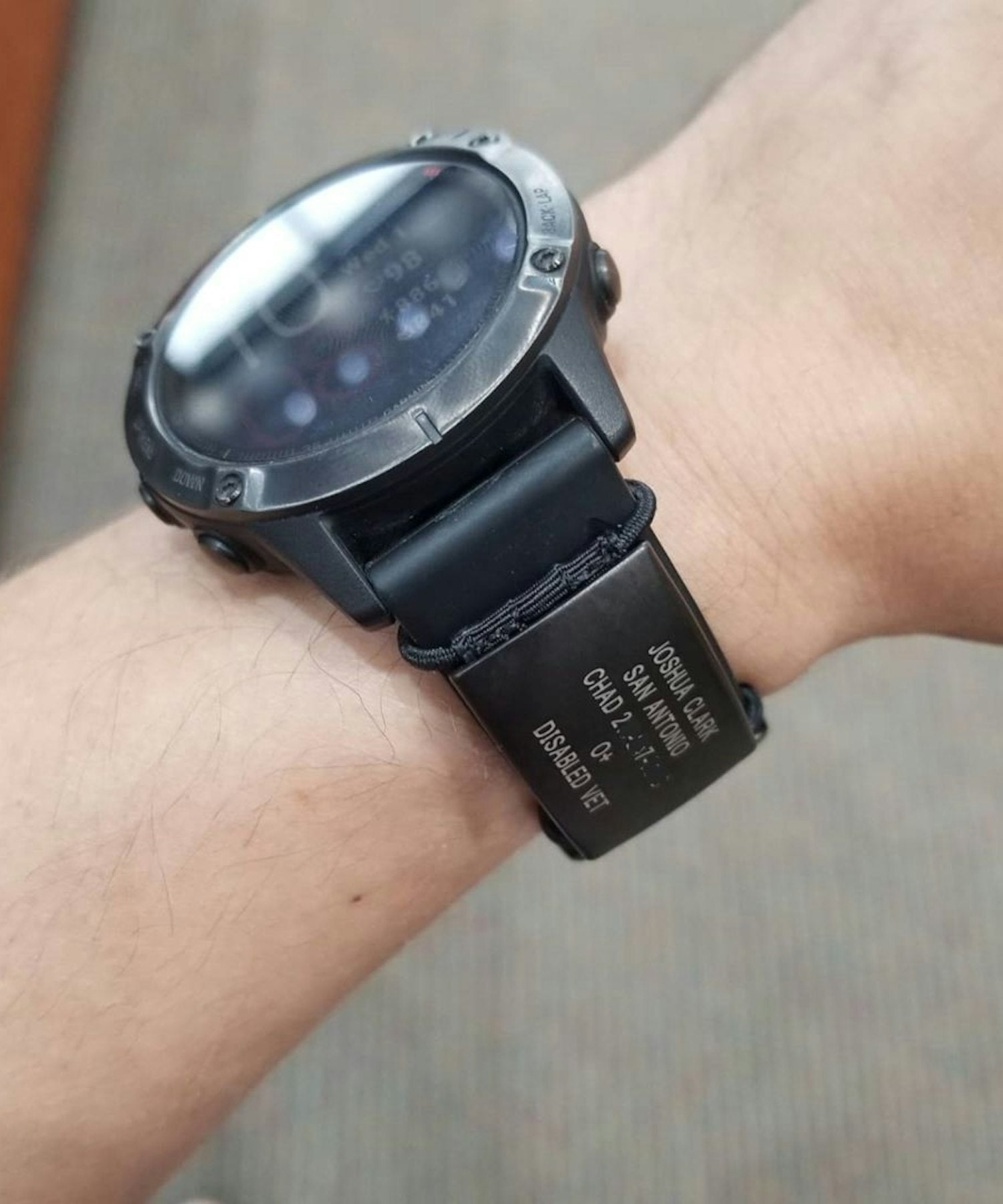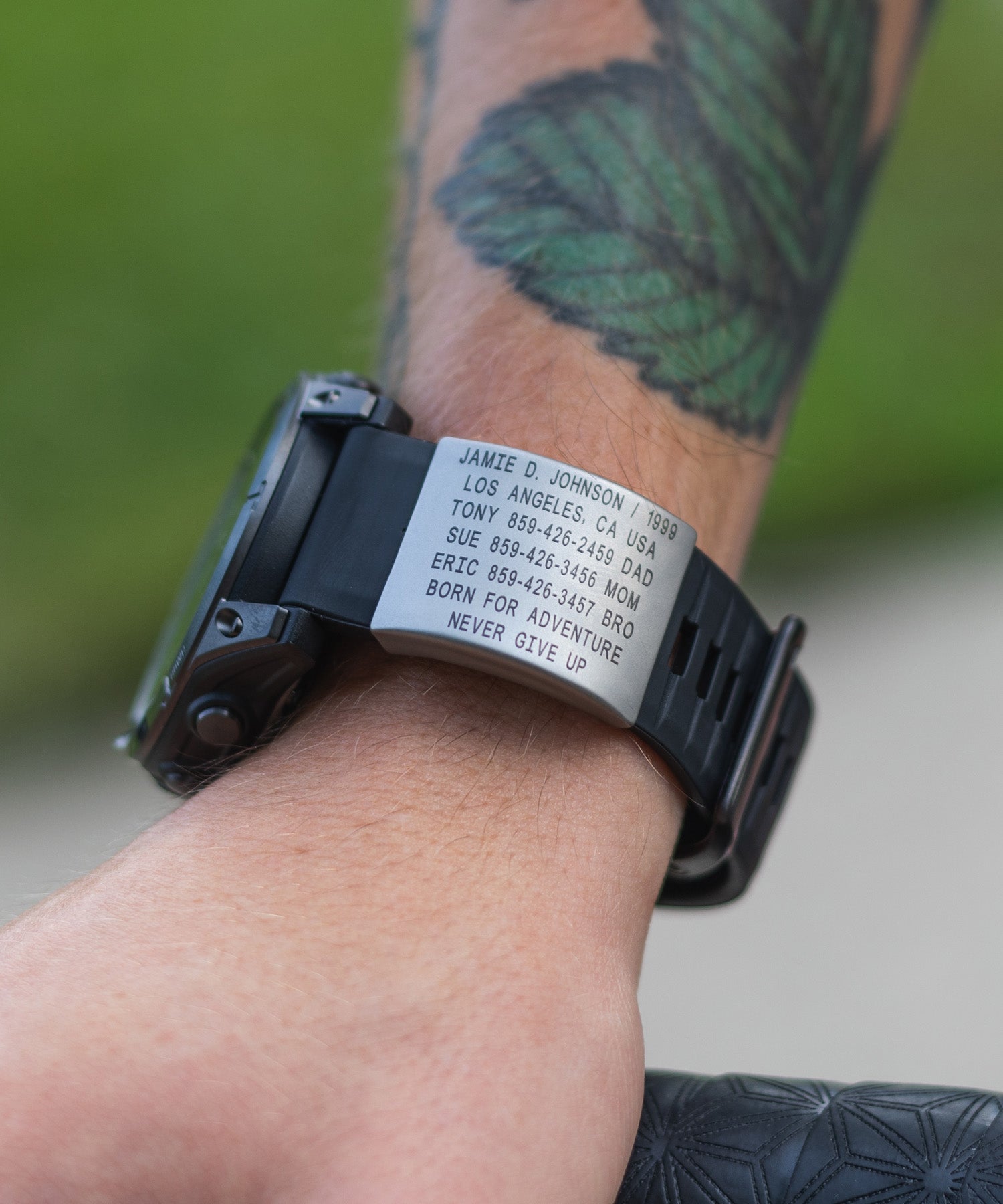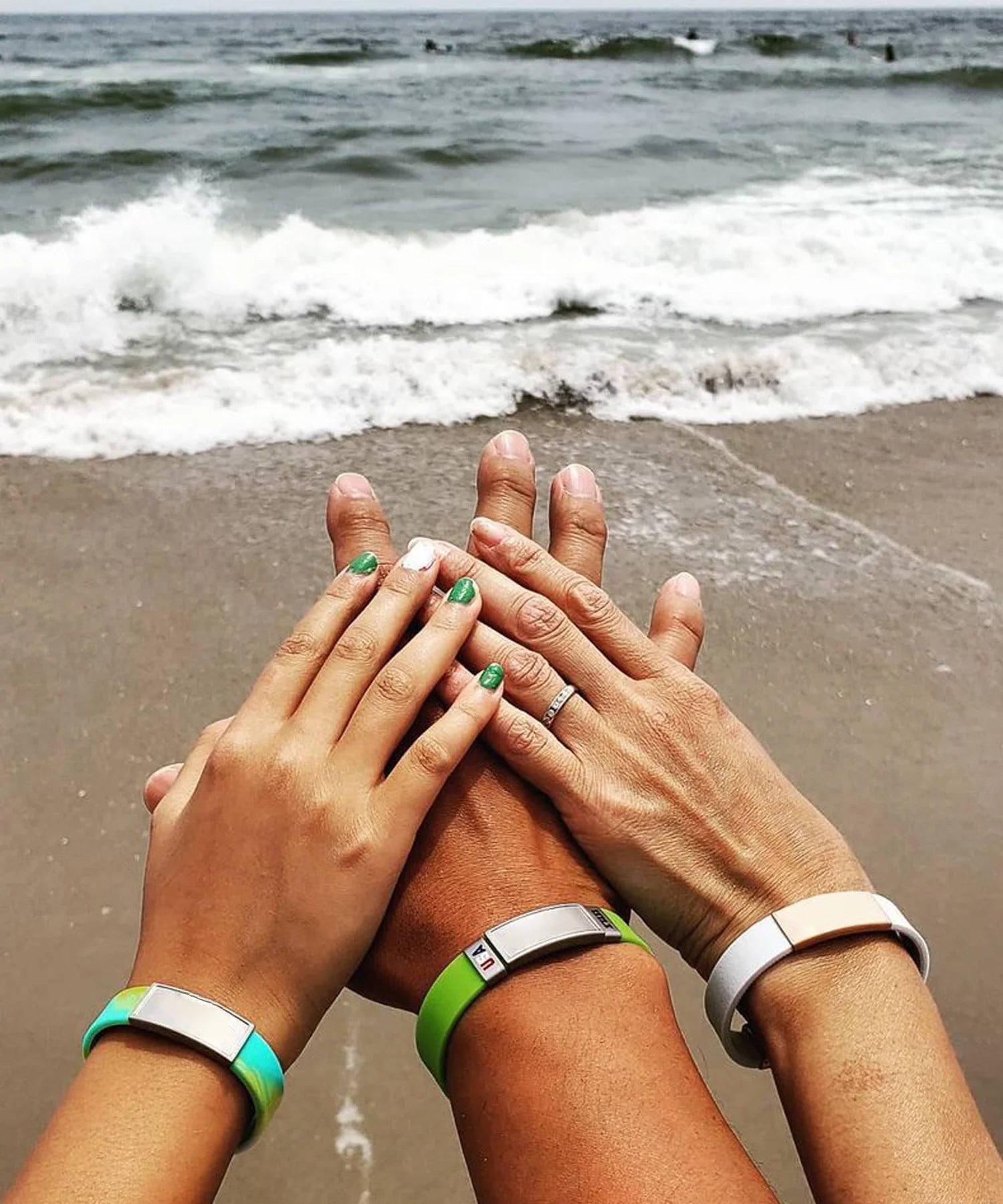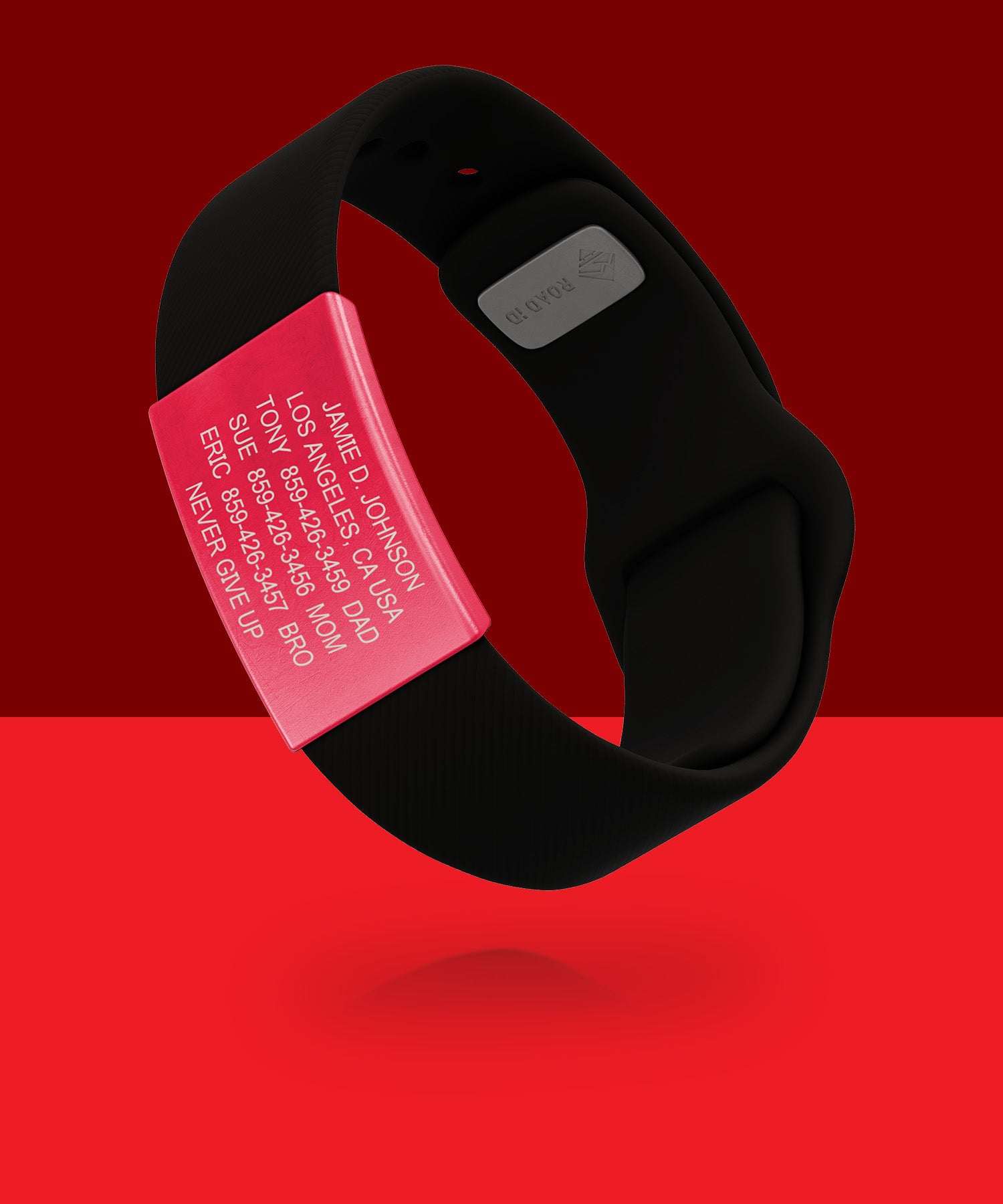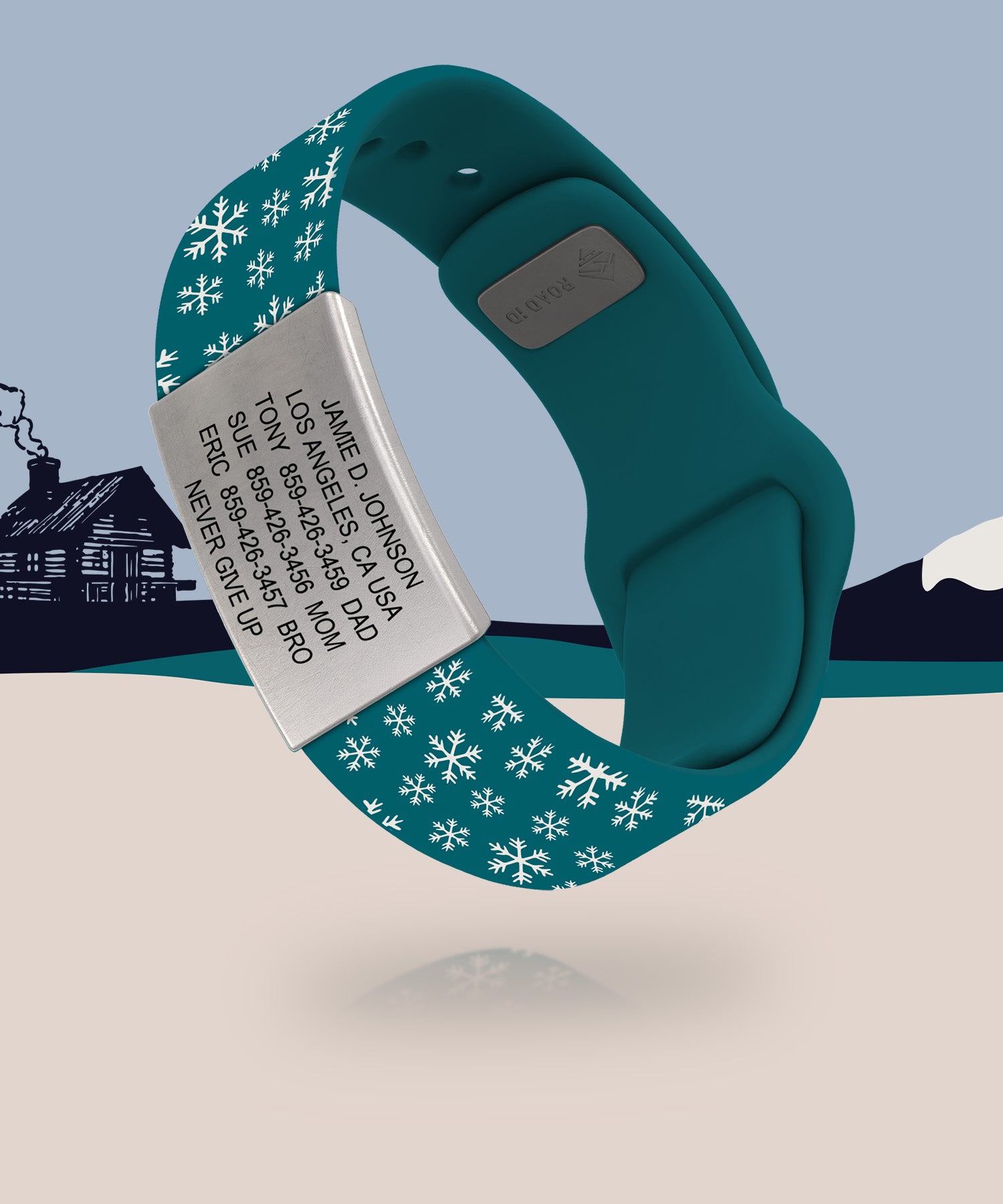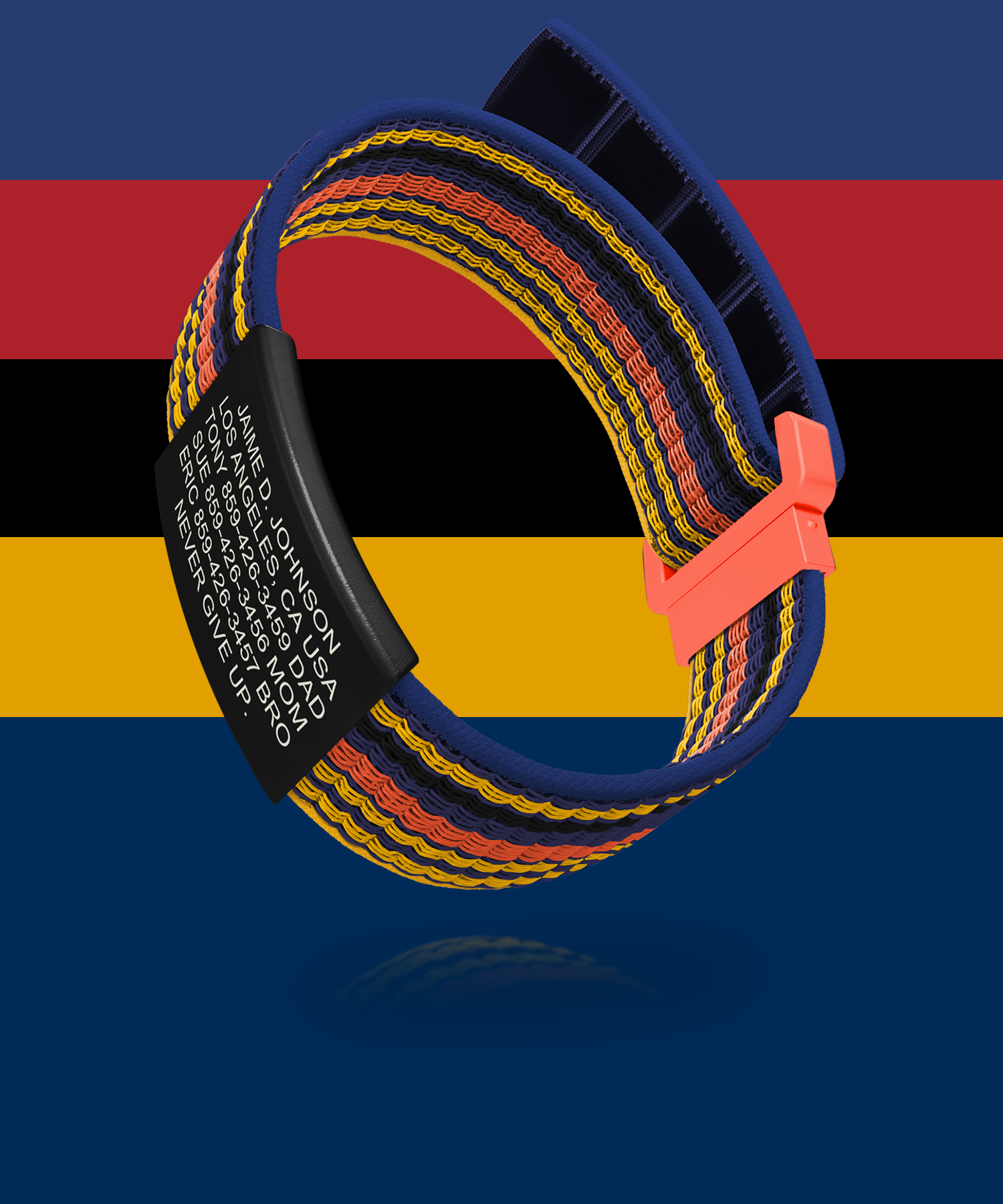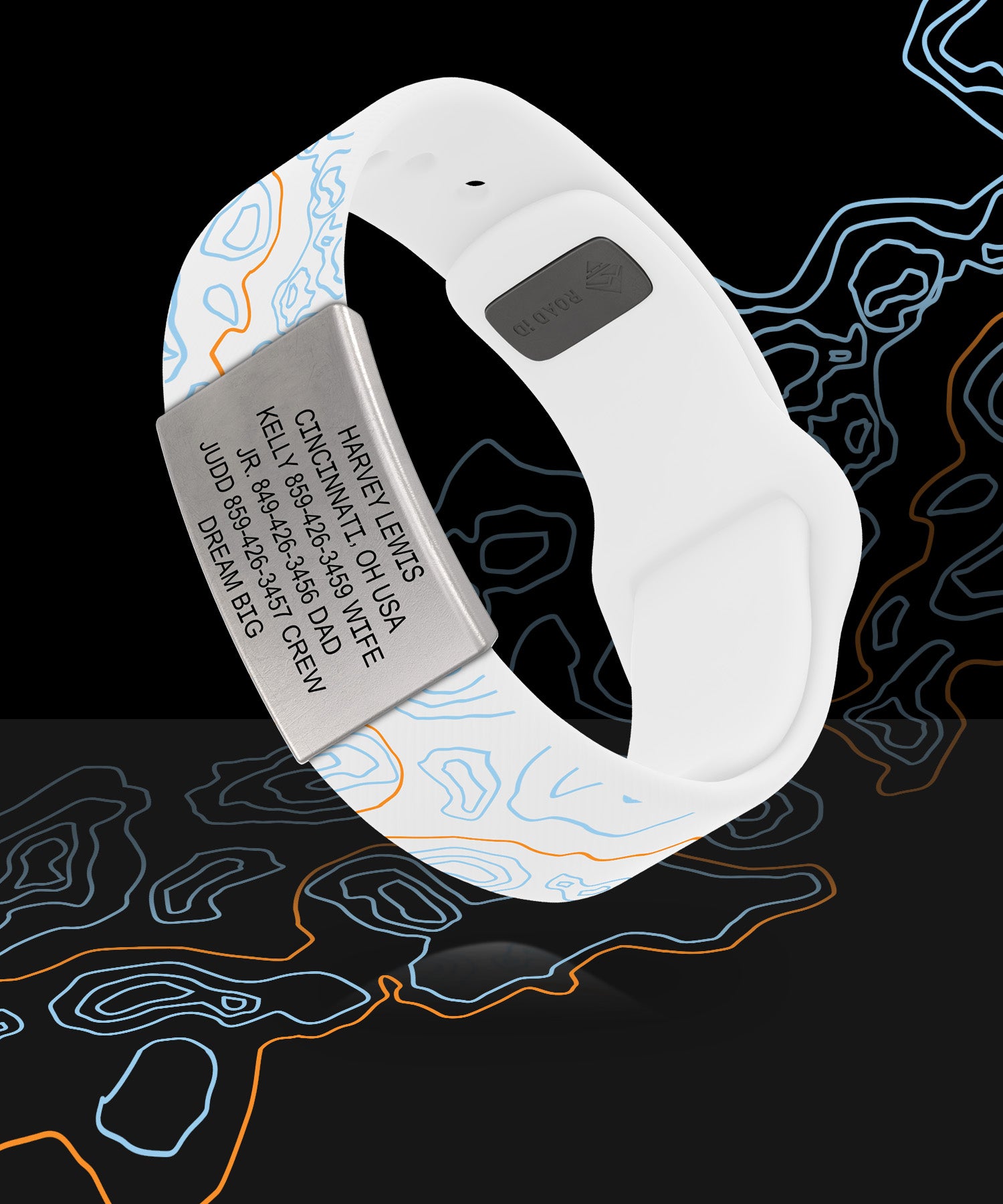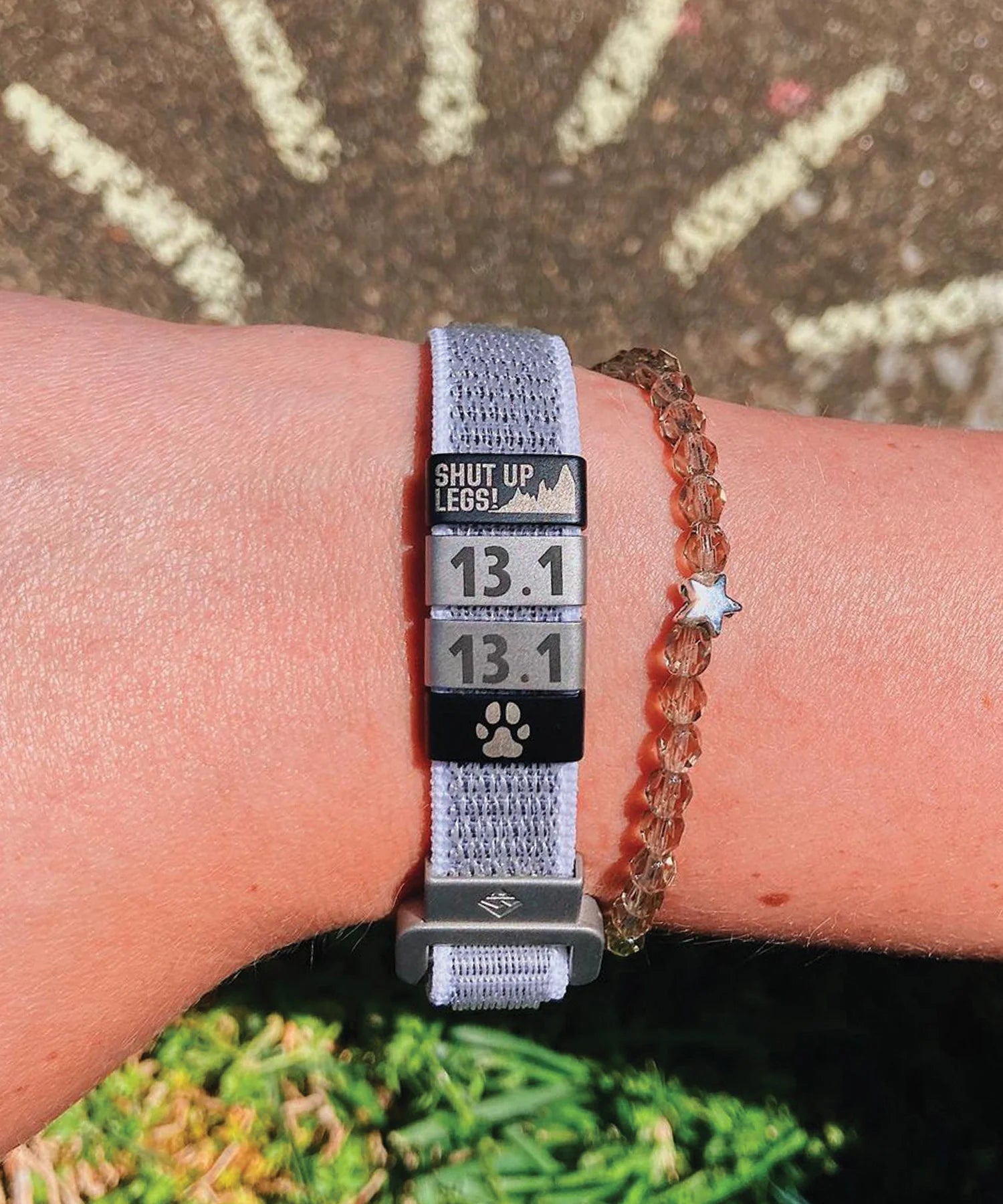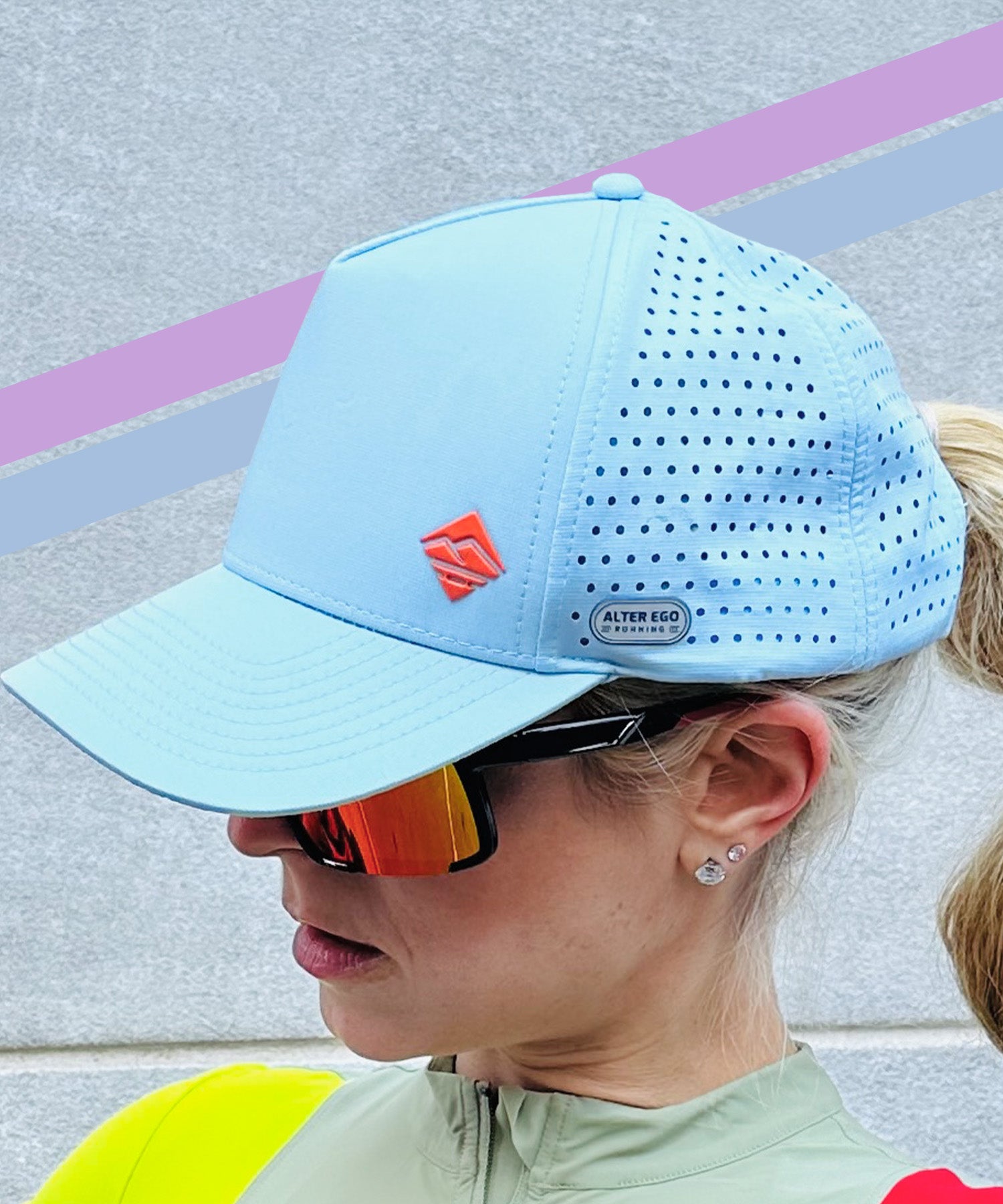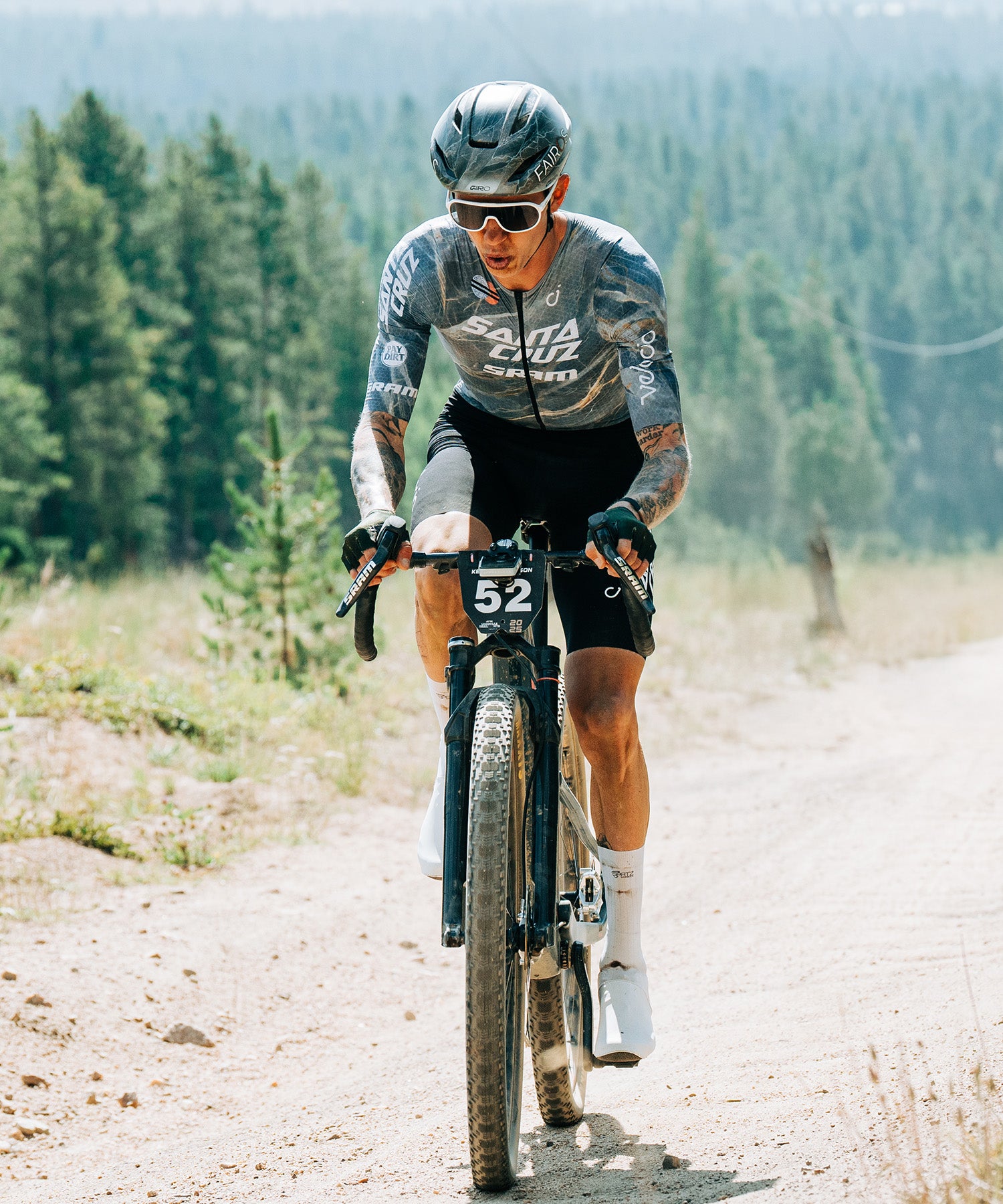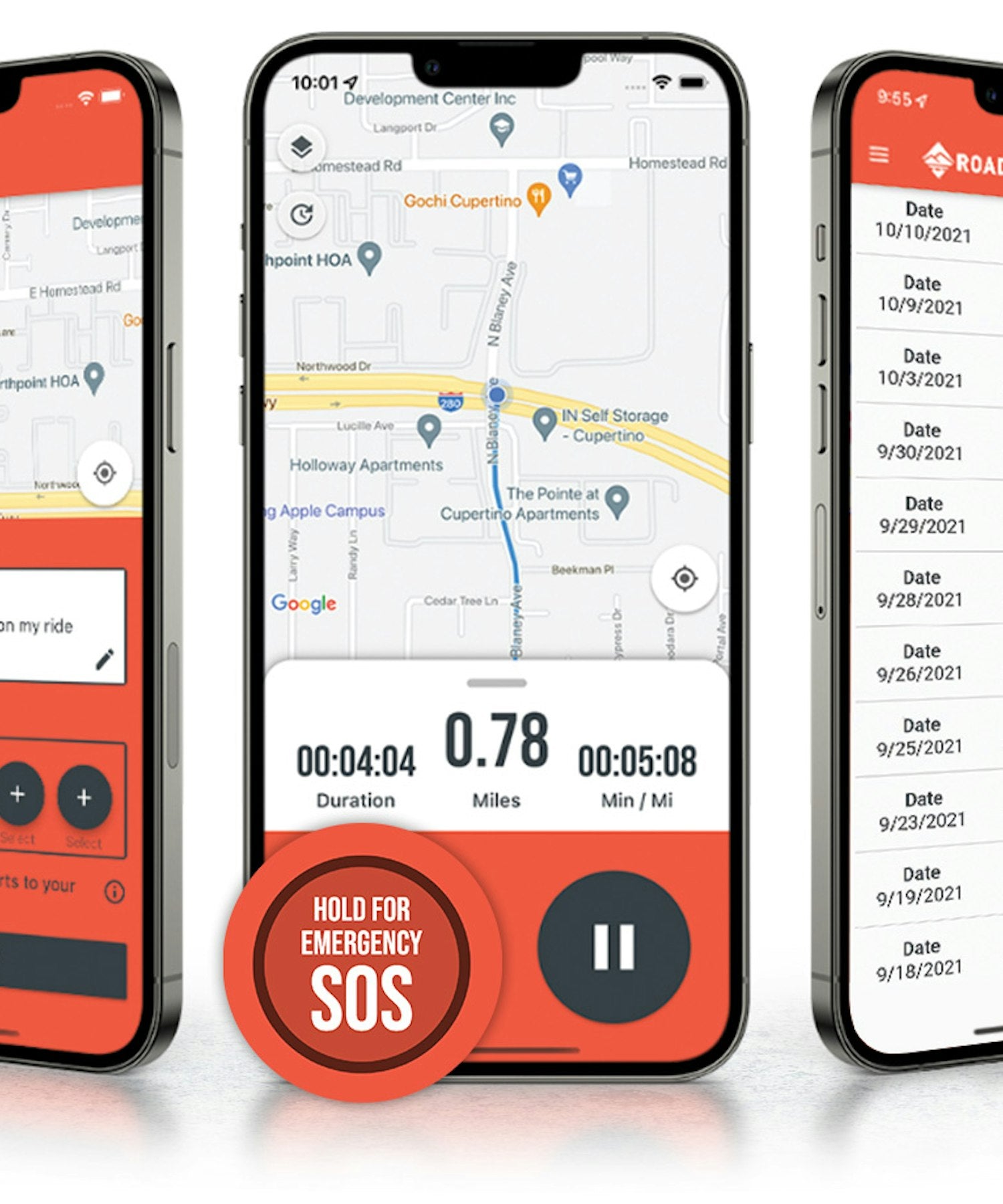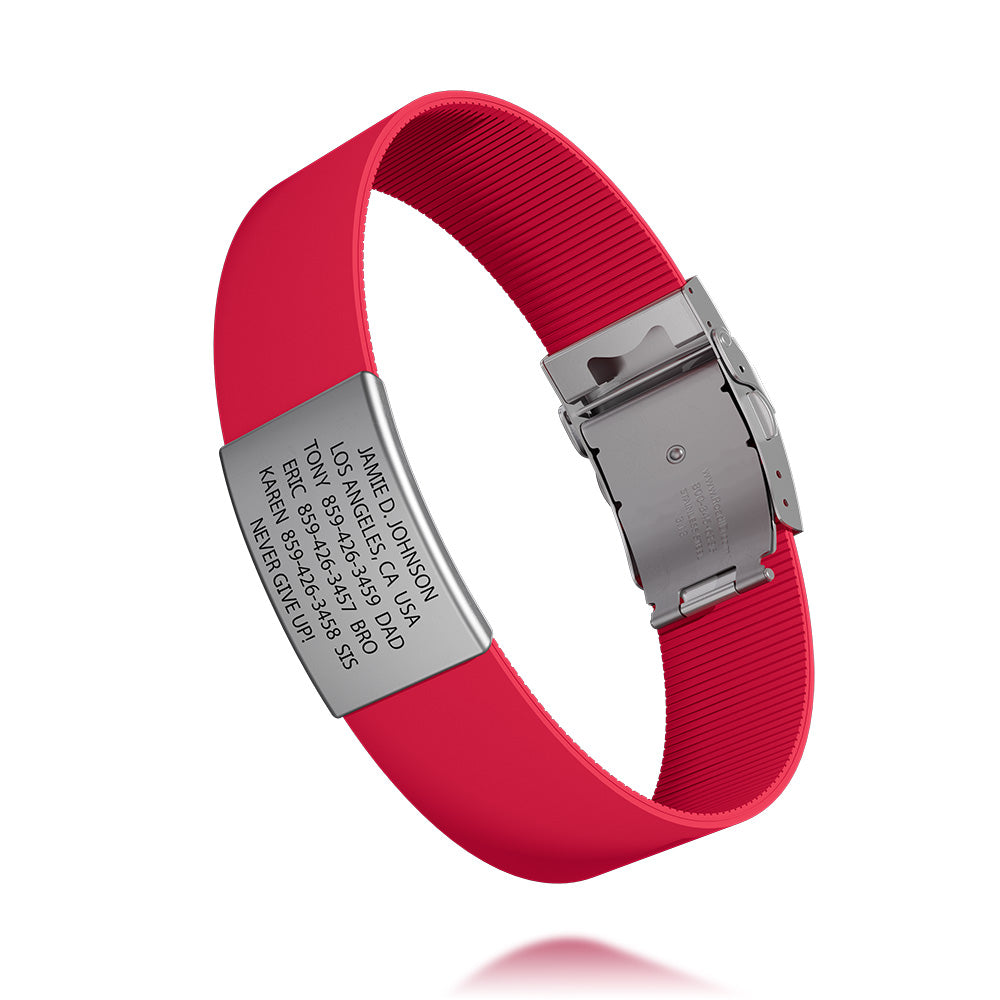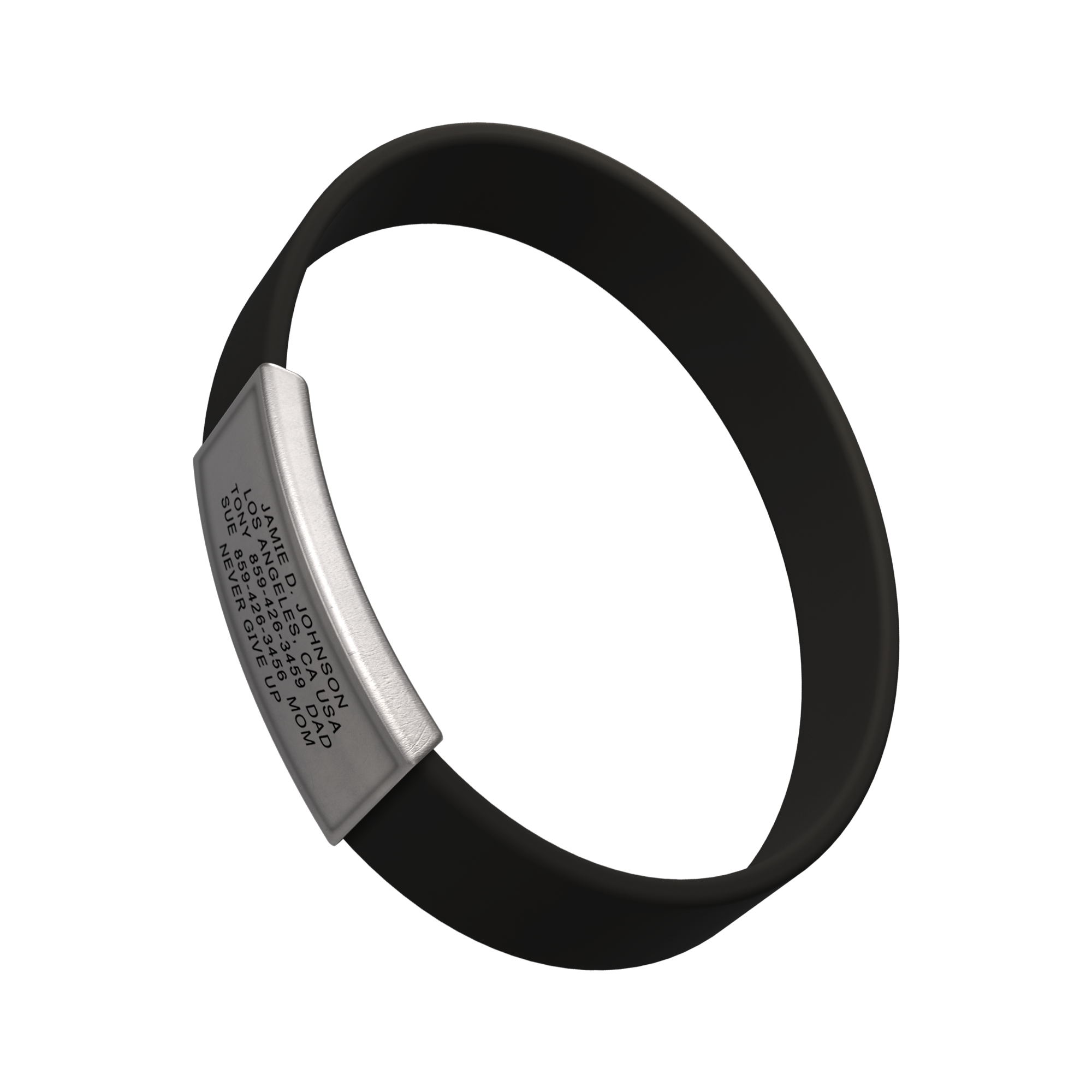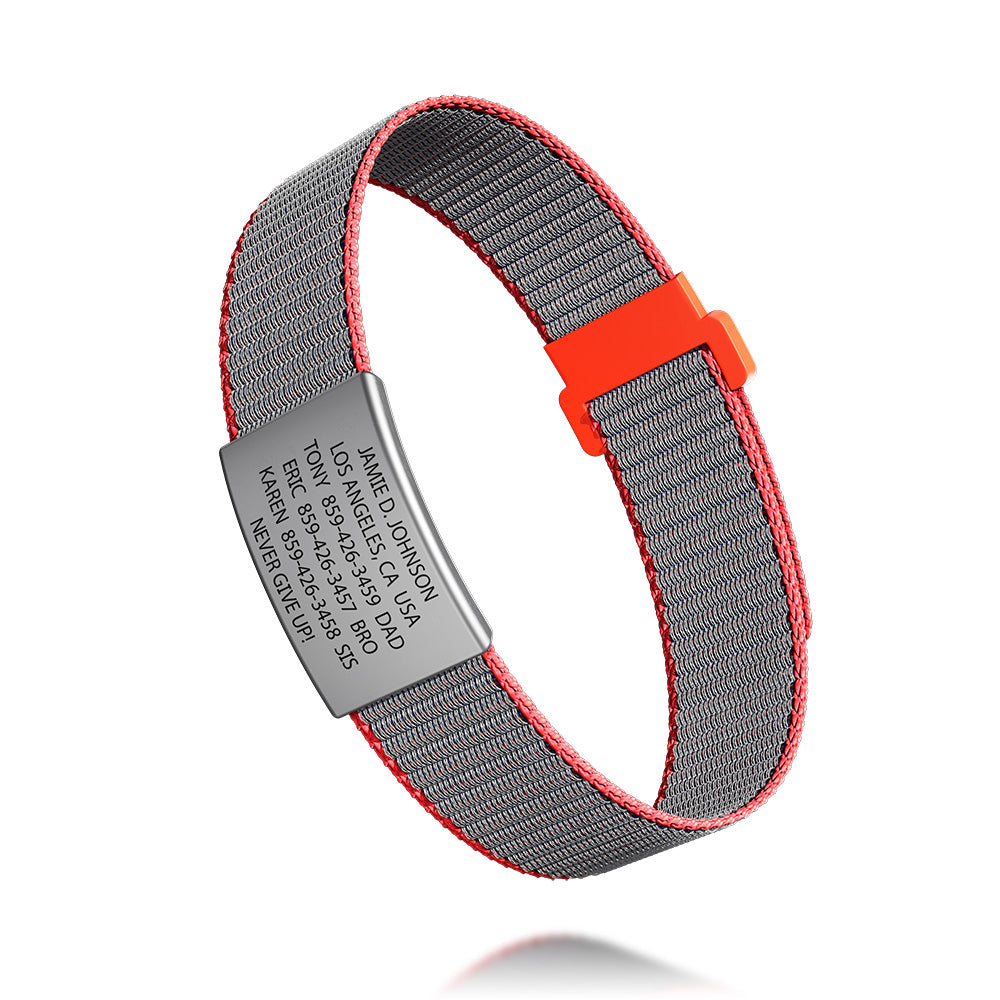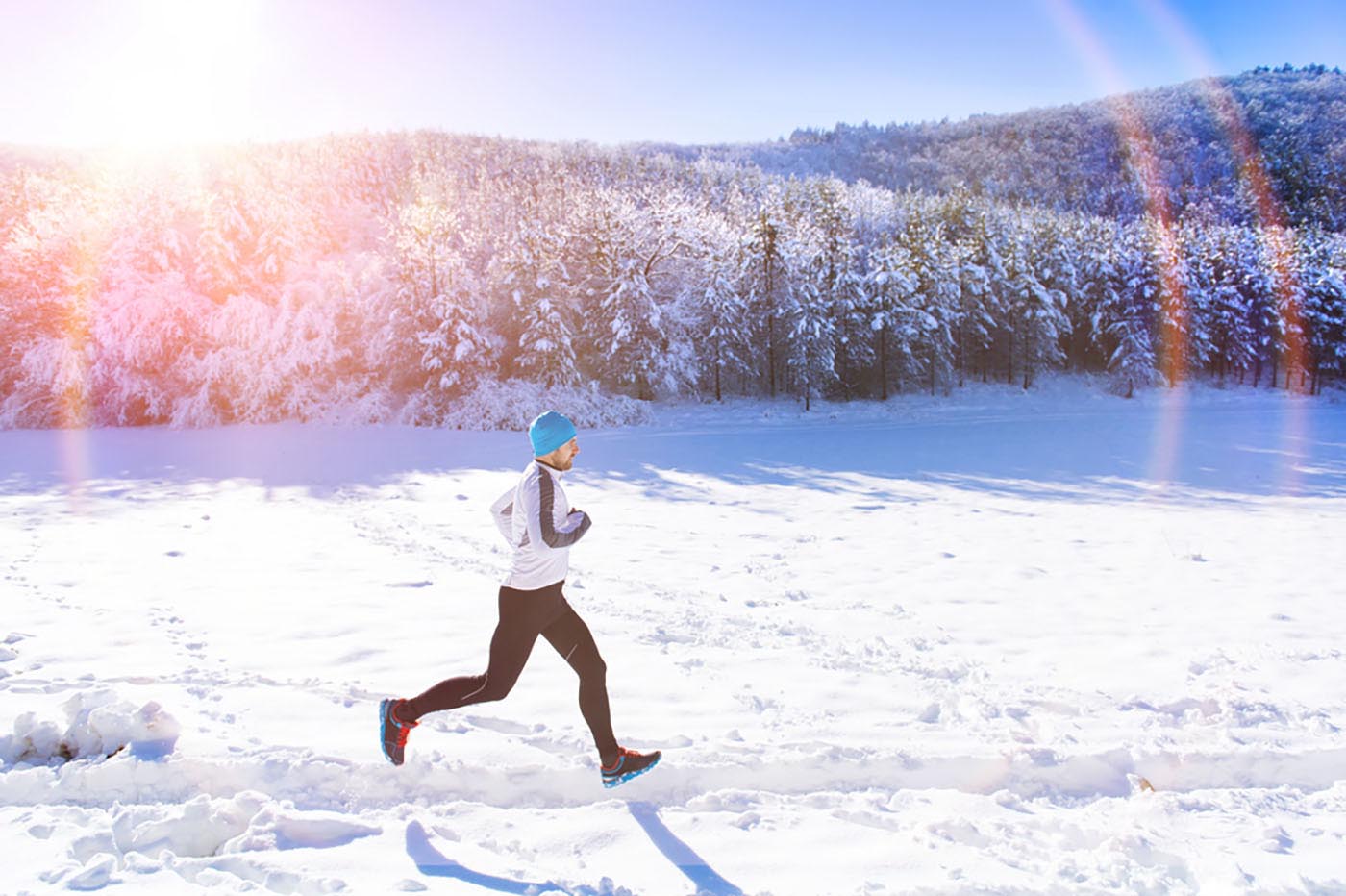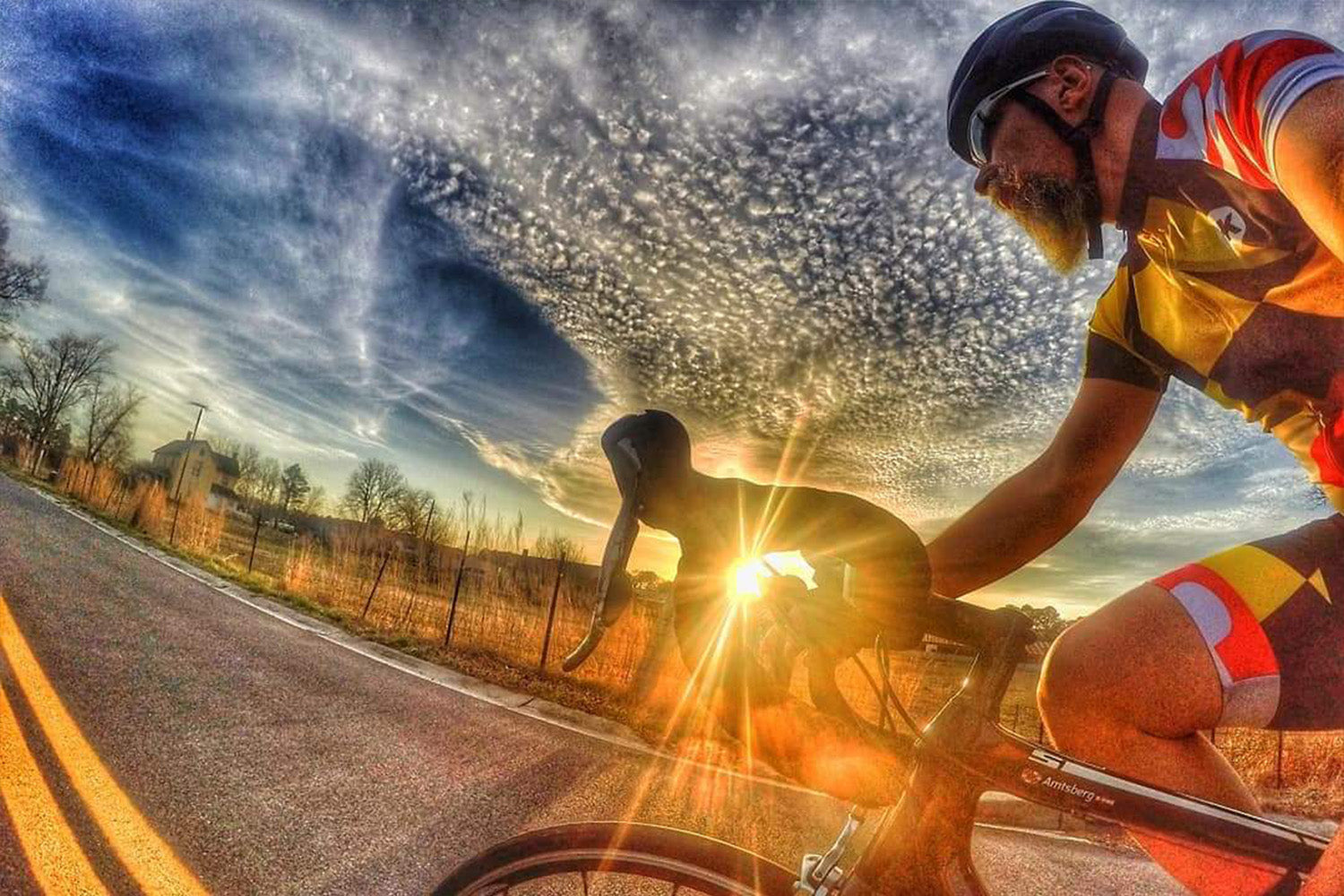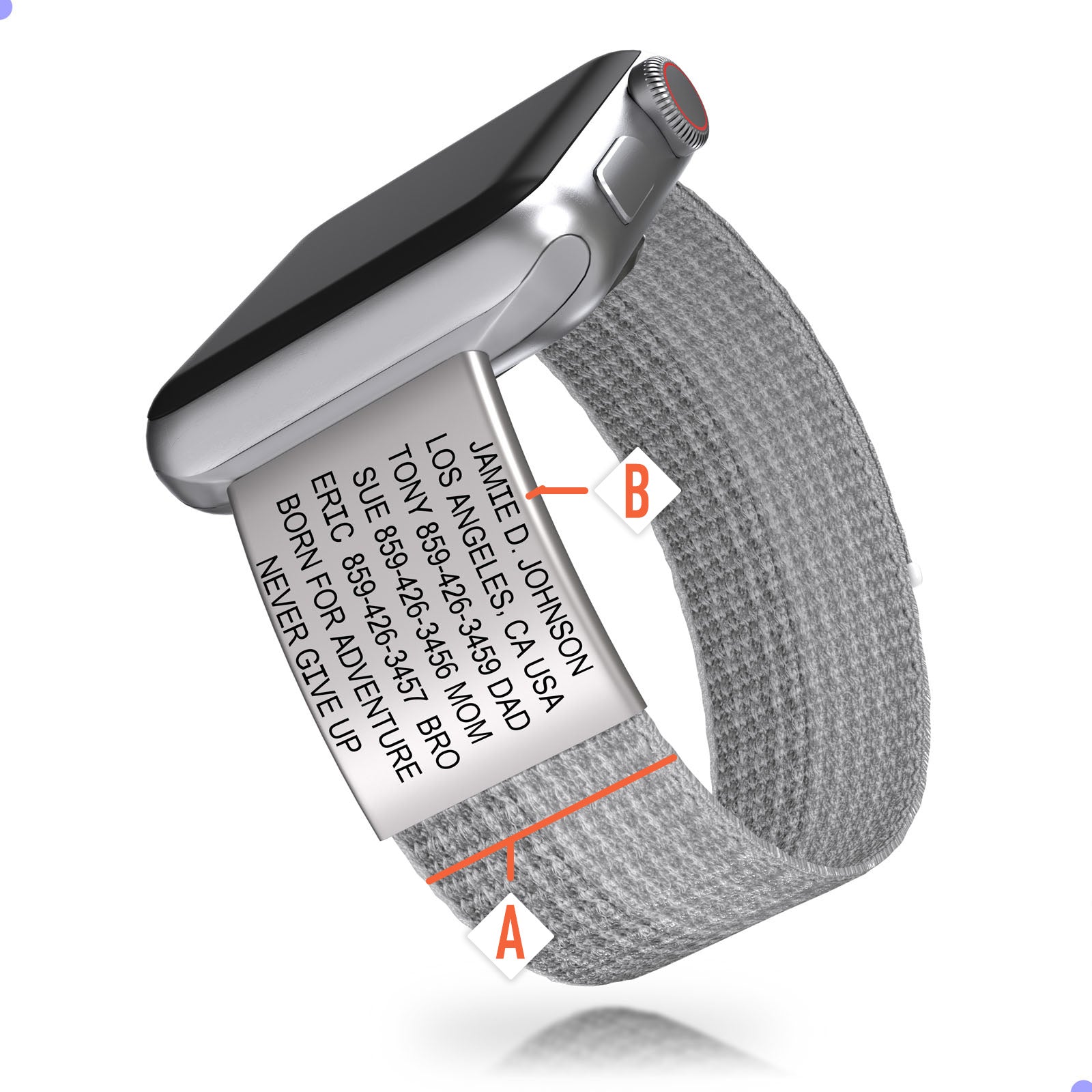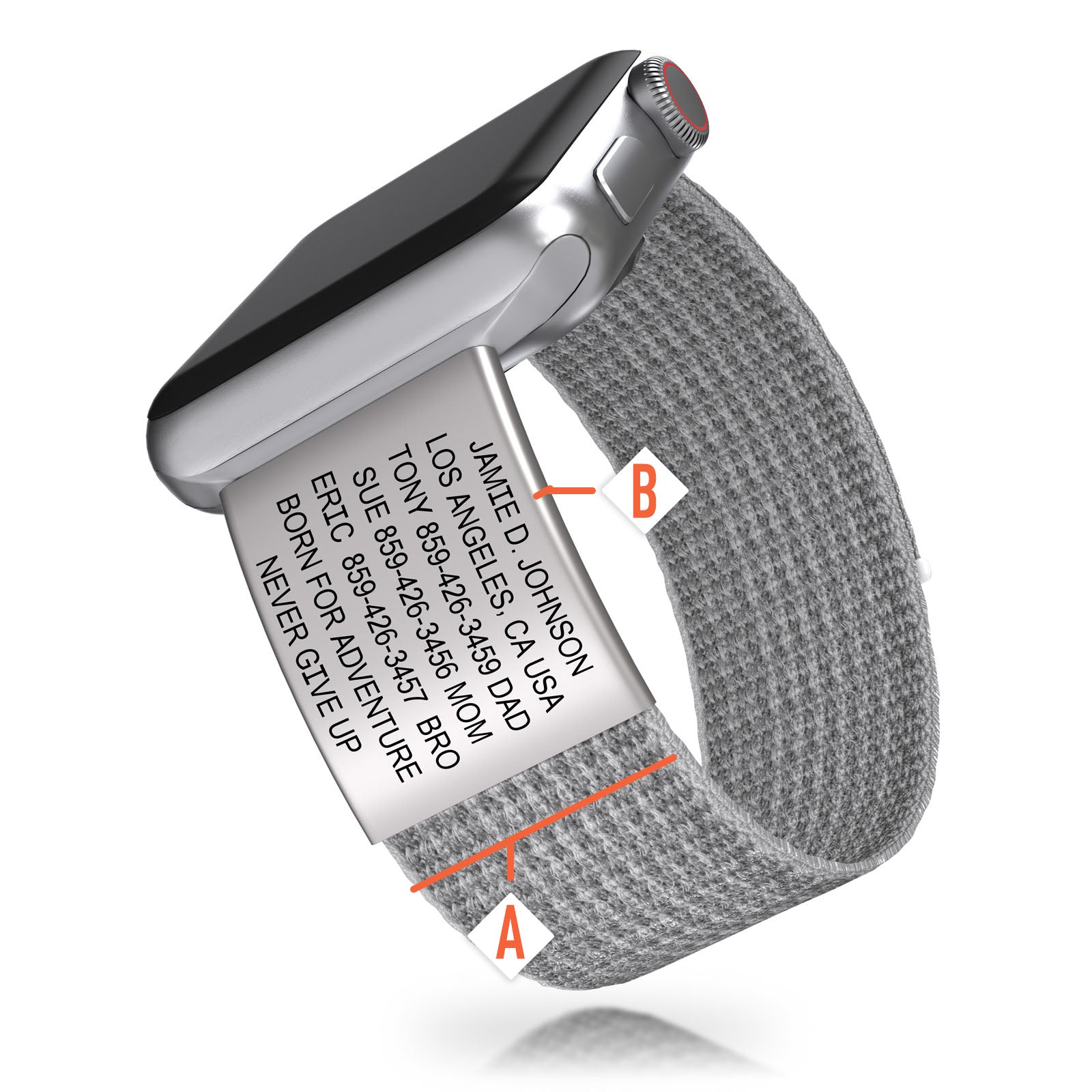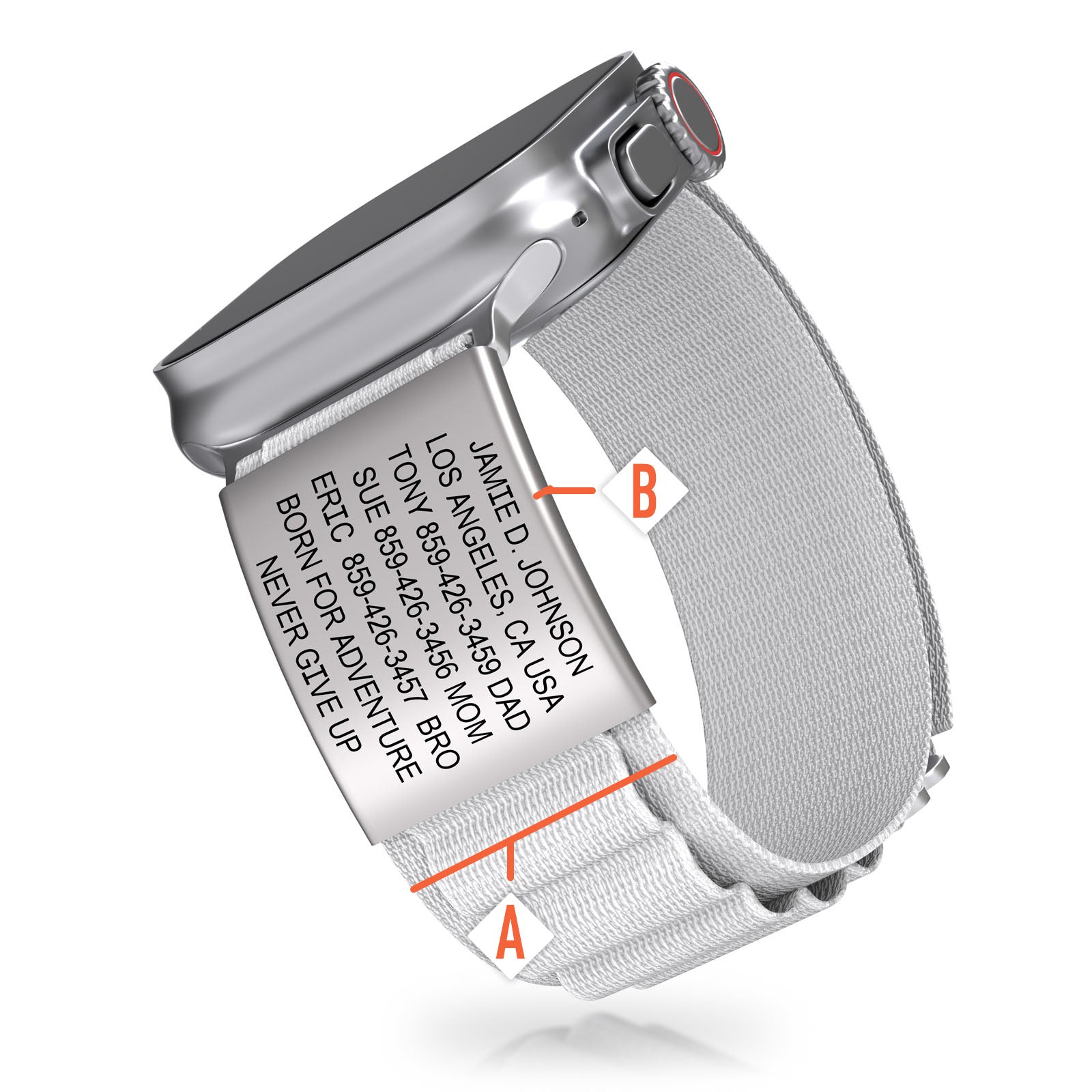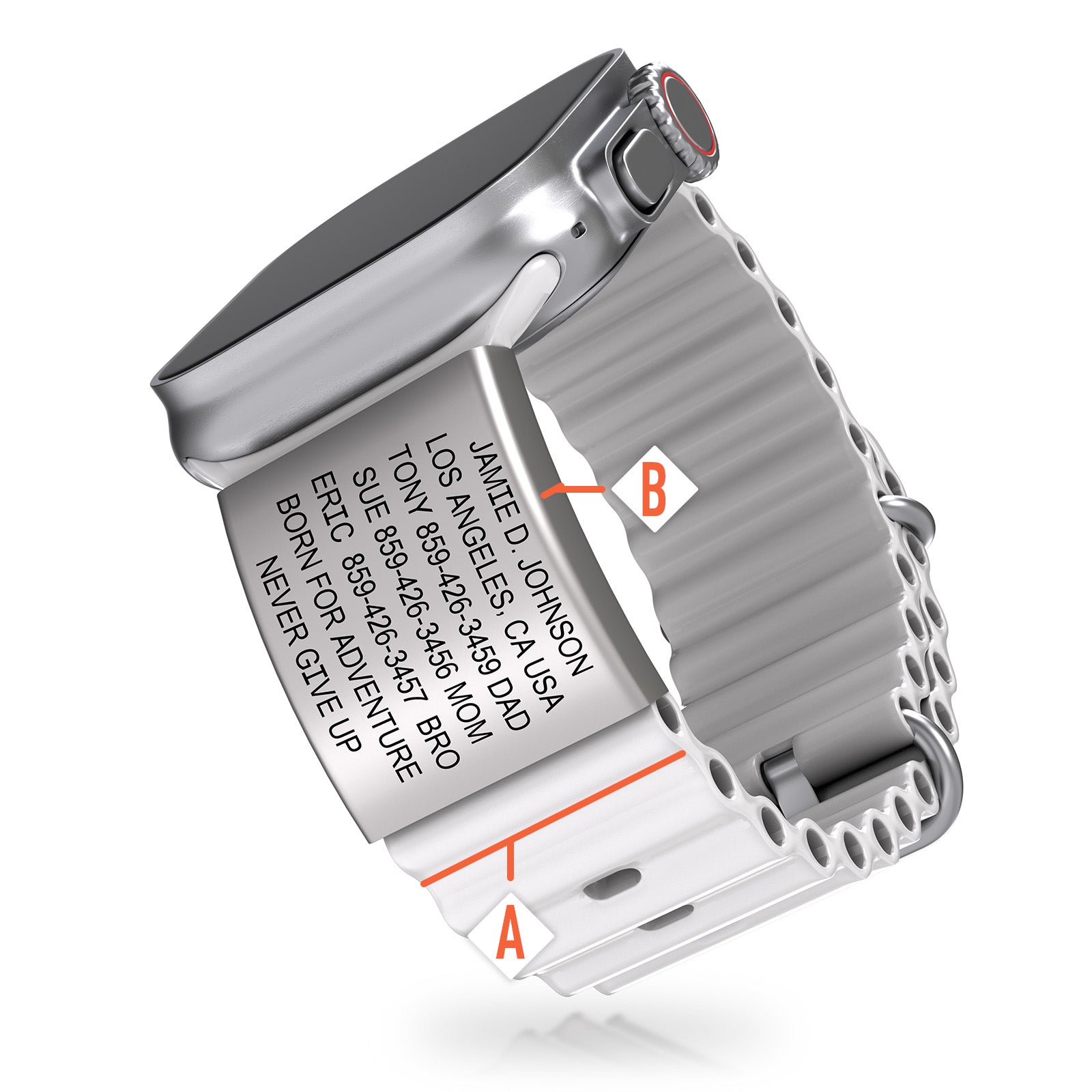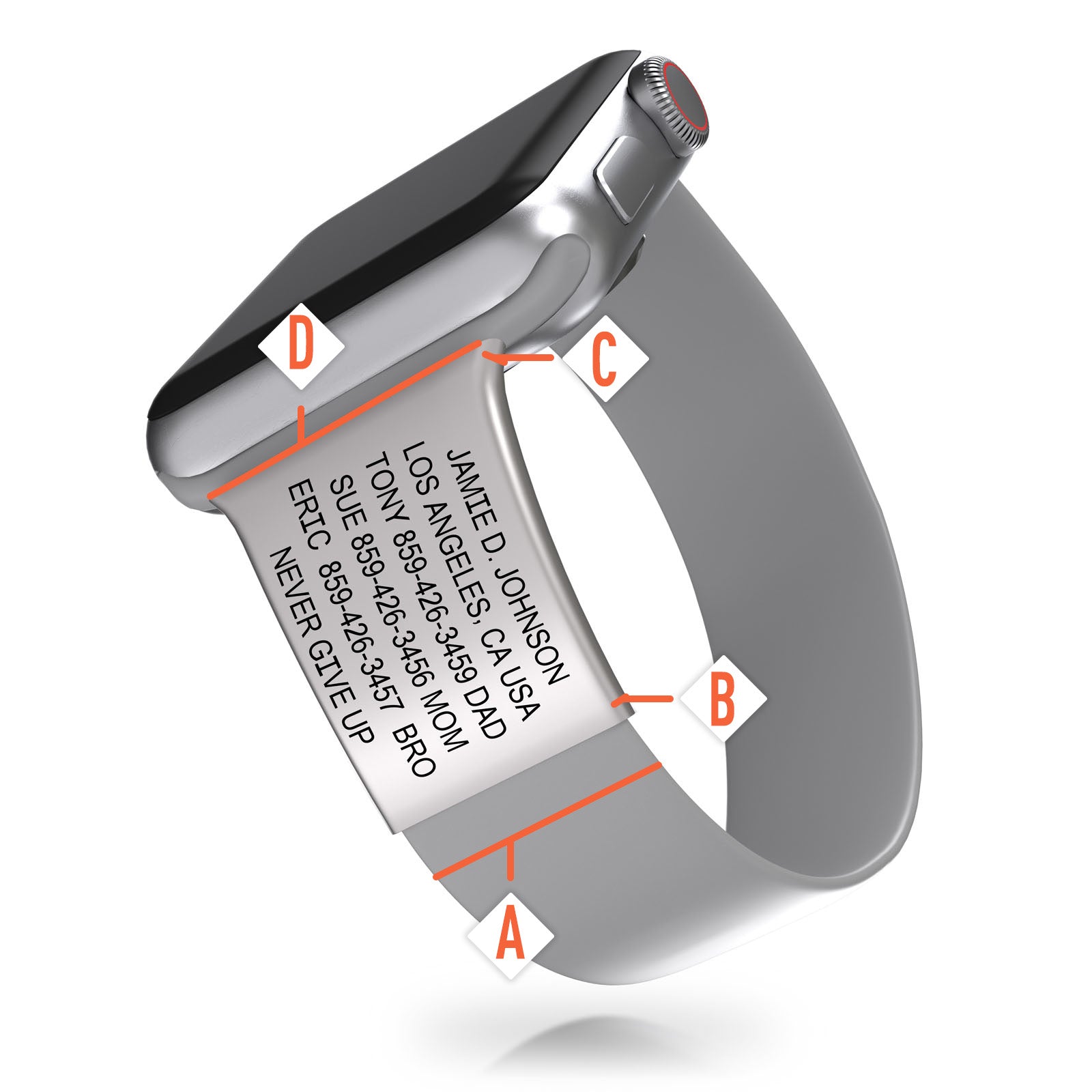
Who says road and trail jogs are off limits just because of cold weather? Not us! In fact, cold weather running can be exhilarating. We find winter, with its cold weather and wind chill factors, to be one of the best time to break a sweat. Getting your miles in between December and March may even bring a few extra benefits.
But, as with any exercise, along with the pros come a few cons. One might wonder how many layers to wear. It's essential to have a good base layer, which provides the foundation for staying warm. Slick roads and sub-zero temps can put even the fittest runners in dangerous situations.
However, being armed with a few pieces of safety gear and some helpful information will help ensure that every stride you take is a safe one year-round.
Are There Benefits to Running in the Winter?
Suiting up for a cold-weather jog may seem like a drag, but if you’re serious about getting in shape or maintaining your endurance, you definitely don’t want to overlook this as a potential tool to help you reach your fitness goals. There’s a reason why the New York Times recently called cold workouts “the new hot yoga,” after all. Some of the benefits of winter running include:
- More fat and calories burned. Yep, some studies show that you can burn more calories and fat when it’s cold out — about 34 percent more calories, to be exact! That’s because the body must expend more calories as it works extra hard to keep you warm through a process called thermogenesis. At the same time, cold produces “brown” fat, which may use regular body fat as fuel.
- Empty trails and roads. If you love the quiet and solitude of solo runs, you’ll undoubtedly enjoy life on the snow-covered trail. The colder conditions tend to keep fair-weathered runners indoors, which means the trails are often wide-open for those of us who aren’t afraid of a little breeze. Tip: If you do plan to run alone in a sparsely populated area, make sure you always wear a running bracelet.

- Better air quality. Those of us who are particularly sensitive to air quality and allergens know that mid-spring runs can be a huge challenge. On the other hand, as pollen counts dwindle with the cold, the air quality gets better and you’ll find yourself breathing a bit easier as you log miles on the trail. This may help you push yourself to go a bit further than you might when it’s warm out.
- Boost in metabolism. Did you know that changes in the weather can actually trigger changes in metabolism, too? Interestingly, it’s all thanks to the same mechanism that helps keep you warm in the cold and helps burn extra fat — thermogenesis. When you’re cold, the body releases hormones that increase energy expenditure, which can leave you with a metabolic boost. If you’re anything like most of us, you might need that in the wintertime when hibernation mode tempts you to overeat.
The Best Winter Running Gear
Naturally, the apparel you sport in the winter should differ from the kind you sport in the summer. When it comes to cold weather running, it's essential that your gear is designed not just for warmth, but also to tackle challenges like wind chill and slippery terrain. A good base layer, for instance, is vital in helping you regulate temperature, ensuring you stay warm without overheating. Beyond that, your winter gear should offer additional features to protect you from the elements and give you an edge over standard running equipment. There are some other key features we’ll highlight below to help you stay safe and push yourself harder.
So without further ado… below is our list of the best winter running gear to help you master those freezing-cold jogs like a pro.
Winter Running Shoes
The kind of winter running shoes you choose should depend on the conditions you’re likely to face. Remember: Your kicks are your first line of defense against the harsh winter conditions, so you need to make sure they’re warm, stable and tough enough to keep you in the game even when it’s freezing and snowy out. Below, you’ll find a list of some of the most important features to look for in winter running shoes.

- Waterproof. If you plan to run on snowy terrain, it’s crucial that you choose a pair of waterproof running shoes made with materials that won’t let moisture seep in, such as Gore-Tex.
- High-top. Some runners prefer to sport high-top shoes in the colder months to help prevent snow from getting in from the top. High-tops can be especially effective if you’re running in a substantial layer of snow, and they also add an extra inch or two of insulation.
- Warm and well-insulated. Speaking of insulation, you need to get serious about it if things dip into the 30s or below where you run. Remember that you can double or triple the warmth factor with the right pair of socks, so consider them a non-negotiable.
- High-traction. Traction is essential when you’re covering slick, icy terrain, and for most of us, that comes with the territory when running in the winter. Look for shoes with lugged outsoles or, in particularly slick areas, wear a pair with tungsten carbide spikes to enhance grip.
- Highly visible. It can’t hurt to choose a pair of running shoes that features some fluorescent accents to help keep you visible when light is low.
Winter Running Socks
As previously mentioned, socks are clutch when you’re engaging in cold weather running, especially during those cold days. Be sure to wear thick, preferably wool running socks that wick away moisture and don’t leave your feet feeling sweaty. It’s important to take sock thickness into consideration when trying on trail shoes for your winter runs. Make sure you have enough breathing room and socks don’t cause tightness.
Medical Alert Bracelets
No matter the time of year, runners who hit the trail solo should wear their medical alert bracelets every time they head out. These comfortable wearables ensure that your most crucial medical and personal information is well within reach should something go awry on the trail. It’s especially important to wear a running bracelet if you have a serious health condition, such as diabetes or allergies, or are non-verbal. Check out our extensive collection of medical alert bracelets offered at ROAD iD!

Temperature-Regulating Base Layer and Pants
Your winter base layer and pants form the foundation of a warm running outfit! You know how far a good running tee and shorts can push you when it’s warm out, and the same goes for the chillier months. Be sure you start with a temperature-regulating base layer and pants made of a high-tech fabric that wicks away moisture to keep skin warm and dry. The key with both your top and bottom is to resist the urge to layer up too much because too many layers can lead to overheating. You’re still going to break a serious sweat, even when temps are frigid.
Wind-Proof Running Jacket
Your jacket is one of the most important pieces of winter running gear, especially if you tend to hit the trail when it’s extremely cold and windy out. But, the key here is to avoid adding too much bulk to the picture, as that will only slow you down and cause you to get too hot. Thin waterproof jackets with lightweight insulation are the best choice because they keep you toasty when you need them but can also be tied around your waist when you’re a couple miles in and need to cool down. Choose a style with a high neck, a hood and a wind guard so you don’t need to wear a scarf.
Hat and Gloves
The same principles used to choose your winter running jacket should be applied to choosing your hat and gloves — keep it lightweight, waterproof and versatile. The last thing you’d want is for your extra gear to slow you down or impede you from pushing yourself to your limit. Look for a pair that’s made from high-performance technical fabrics that resist moisture. For most modern runners, touch-screen fingertip gloves are a must so you can easily set up your music and log your route before you hit the trail.
Winter Pet Gear
Your furry friend makes a great running companion year-round, and a little jogging does you both good. But Fido is just as susceptible to slips, falls and frostbite as you are, so you need to make sure you set him up for success. Paw protection is vital when it’s snowy and icy out — and the salt on the roads can do serious damage — so try to get your pup to wear booties. If he won’t stand for it, try a topical barrier wax like Musher’s Secret. Also, because the colder weather can impede the trail and bring exciting new smells, make sure your dogs have up-to-date pet ID tags before you head out. Even the most trustworthy dogs may let their noses get the best of them on a wintry day!

Safety Tips for Winter Running
Gear is a massive consideration when strategizing your winter runs, but it’s not the whole story. There are a few important things you need to think through, ensuring that you stay safe and toasty while you crush your personal best. Here are some important things to consider.
- Keep It High-Vis — Winter is high time for low-visibility running, what with the sun going down so early and all the clouds and snow hindering your view. Whether you’re a dedicated road runner or prefer the quiet trails, you still need to think about adding some high-visibility pops to your apparel. Remember that visibility is even important when winter trail running, especially if you tend to share the path with snowmobilers, cross-country skiers and sledders.
- Change as Soon as You Return Home — Even when it’s sub-zero out, your body temp will skyrocket if you’re hitting it especially hard. But when you’re back in your car or house, your body will chill out very quickly, so make sure you’re ready to hop into something warm — or, better yet, a hot shower — as soon as you’re done, even if you feel toasty when you’re winding down.
- Stay Hydrated — We know we have to chug water by the gallon when it’s hot out and we’re sweating like crazy, but hydration is just as important when it’s nippy out and you’re burning lots of calories. In fact, your sweat rate — the amount of fluids you lose in sweat when exercising — is still high when temperatures have dropped. When you lose sweat and become overly dehydrated, your performance can become seriously impaired, but keeping the H2O in flow can prevent that from happening.

- Pay Attention to the Weather — Depending on where you live and the time of year, there can be a 30-degree difference between the day’s high and low temperature, so be sure to keep an eye on the weather patterns of the day. Try to head out for a run when it’s brightest and warmest out. This will help keep you visible and eliminate your need to wear bulky apparel that might slow you down or cause you to overheat. You can also try your best to run with the wind at your back to avoid painful chapped skin, lips and ears.
Winter Running Can Be Safe and Fun
Since there are so many great benefits to hitting the trail when it’s cold out, there’s no reason not to lace up your sneakers and get a few miles in, even if it’s snowing. But like any activity, winter running has some risks, so just make sure you know them and prepare for them before you head out! This guide will help ensure that you stay safe and have fun when you run all year long.
Get Your Runner ID Today!
